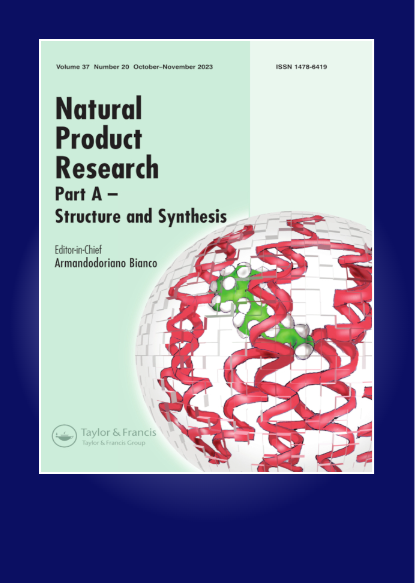Phytochemical and phylogenetic perspective of medicinal plants used for cancer treatment in Egypt
IF 1.9
3区 化学
Q3 CHEMISTRY, APPLIED
引用次数: 0
Abstract
With a global increase in mortality, particularly in low-income countries, cancer remains one of the most devastating diseases. Medicinal plants rich in phytochemicals have shown promise as chemoprotective and anticancer agents. As a result, in this study, we compiled a list of medicinal plant species that have been used to treat cancer in the last decade. The results of our review show that 170 plant species from 53 plant families have been used to treat various types of cancer. Plant species are categorised based on their taxonomic position and level of cytotoxicity (very strong, strong, cytotoxic, moderate, and weak). The phylogenetic relationships between these plant species were also reconstructed. The most frequently mentioned plant families were Fabaceae, Asteraceae, Solanaceae, Brassicaceae and Polygonaceae. Phytochemicals such as flavonoids, alkaloids, betalains, saponins and polyphenols are found in highly therapeutic plants. The species Solanum, Khaya, Eichhornia, Coccoloba, Annona, Withania, Salicornia, Beta, Persicaria, Persea, Hyphaene and Kalanchoe showed high potency against a range of cancer cells.
埃及用于治疗癌症的药用植物的植物化学和系统发育前景。
随着全球死亡率的上升,尤其是在低收入国家,癌症仍然是最具破坏性的疾病之一。富含植物化学物质的药用植物有望成为化学保护剂和抗癌剂。因此,在本研究中,我们汇编了一份过去十年中用于治疗癌症的药用植物物种清单。研究结果表明,53 个植物科中的 170 种植物已被用于治疗各种癌症。植物物种根据其分类学位置和细胞毒性水平(极强、强、细胞毒性、中等和弱)进行分类。此外,还重建了这些植物物种之间的系统发育关系。最常提及的植物科是豆科、菊科、茄科、芸香科和蓼科。黄酮类、生物碱、甜菜碱、皂苷和多酚等植物化学物质存在于具有高度治疗作用的植物中。Solanum、Khaya、Eichhornia、Coccoloba、Annona、Withania、Salicornia、Beta、Persicaria、Persea、Hyphaene 和 Kalanchoe 等物种对一系列癌细胞具有很强的抗癌能力。
本文章由计算机程序翻译,如有差异,请以英文原文为准。
求助全文
约1分钟内获得全文
求助全文
来源期刊

Natural Product Research
化学-医药化学
CiteScore
5.10
自引率
9.10%
发文量
605
审稿时长
2.1 months
期刊介绍:
The aim of Natural Product Research is to publish important contributions in the field of natural product chemistry. The journal covers all aspects of research in the chemistry and biochemistry of naturally occurring compounds.
The communications include coverage of work on natural substances of land and sea and of plants, microbes and animals. Discussions of structure elucidation, synthesis and experimental biosynthesis of natural products as well as developments of methods in these areas are welcomed in the journal. Finally, research papers in fields on the chemistry-biology boundary, eg. fermentation chemistry, plant tissue culture investigations etc., are accepted into the journal.
Natural Product Research issues will be subtitled either ""Part A - Synthesis and Structure"" or ""Part B - Bioactive Natural Products"". for details on this , see the forthcoming articles section.
All manuscript submissions are subject to initial appraisal by the Editor, and, if found suitable for further consideration, to peer review by independent, anonymous expert referees. All peer review is single blind and submission is online via ScholarOne Manuscripts.
 求助内容:
求助内容: 应助结果提醒方式:
应助结果提醒方式:


